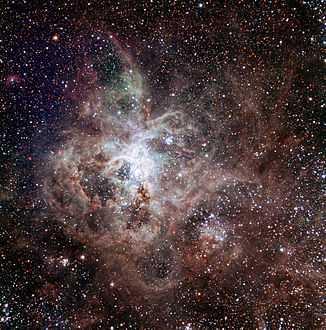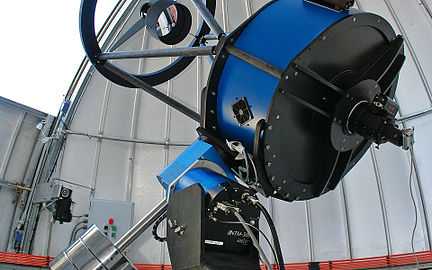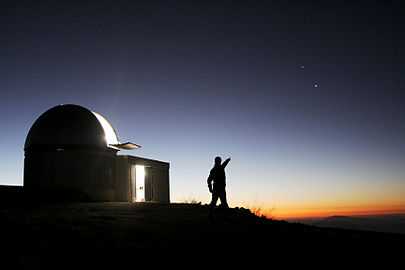TRAPPIST
_by_TRAPPIST_on_2013-11-15.jpg)

The Transiting Planets and Planetesimals Small Telescope (TRAPPIST) is a Belgian, remote and robotic telescope in Chile, which came online in 2010. It is named in homage to Trappists in the Belgian region.[1][2]
Situated high in the Chilean mountains at ESO's La Silla Observatory, it is actually controlled from Liege, Belgium with some autonomous features. It is a reflecting telescope 0.60 m (23.5″) in aperture diameter and is housed in the dome of the retired Swiss T70 telescope.
The telescope is a joint venture between the University of Liège, Belgium and Geneva Observatory, Switzerland, and among other tasks, it specializes in comets and hunting exoplanets.[3][4]
In November 2010, it was one of the few telescopes that observed a stellar occultation of the planetary body Eris, revealing that it may be smaller than Pluto, and it helped observe a stellar occultation by Makemake, when it passed in front of the star NOMAD 1181-0235723. The observations of this event showed it lacked a significant atmosphere.[5][4]
Gallery
-

The 60-cm telescope is operated from Liège, Belgium, 12 000 km away.
-

TRAPPIST's enclosure
-

TRAPPIST is housed at the former Swiss T70 telescope site
References
- ↑ http://www.ati.ulg.ac.be TRAPPIST – The Trappist Order: a lifestyle
- ↑ "New National Telescope at La Silla—TRAPPIST to Scout the Sky and Uncover Exoplanets and Comets (eso1023 — Organisation Release)". http://www.eso.org/''. ESO. 8 June 2010. Retrieved 4 January 2015.
- ↑ ScienceDaily, TRAPPIST Telescope to Scout the Sky and Uncover Exoplanets and Comets, 9 June 2010
- ↑ 4.0 4.1 Newscientist.com, Kelly Beatty - Former 'tenth planet' may be smaller than Pluto, November 2010
- ↑ Dwarf Planet Makemake Lacks Atmosphere (ESO : 21 November 2012)
See also
- Carlsberg Meridian Telescope, brewery related telescope